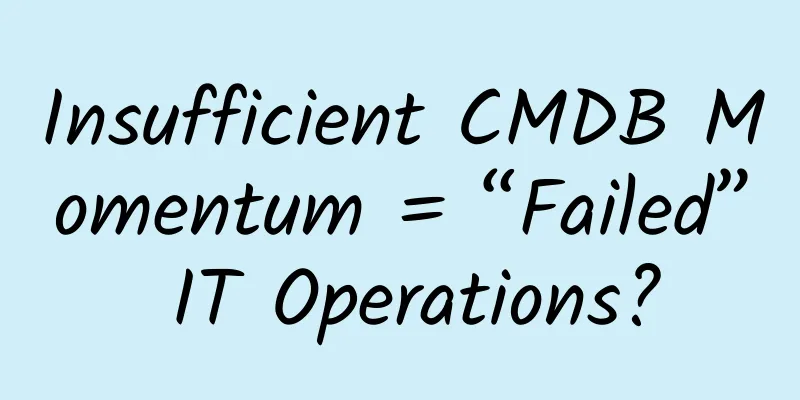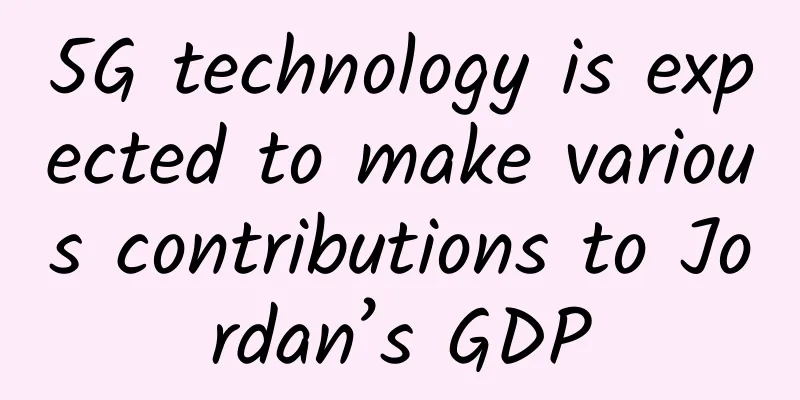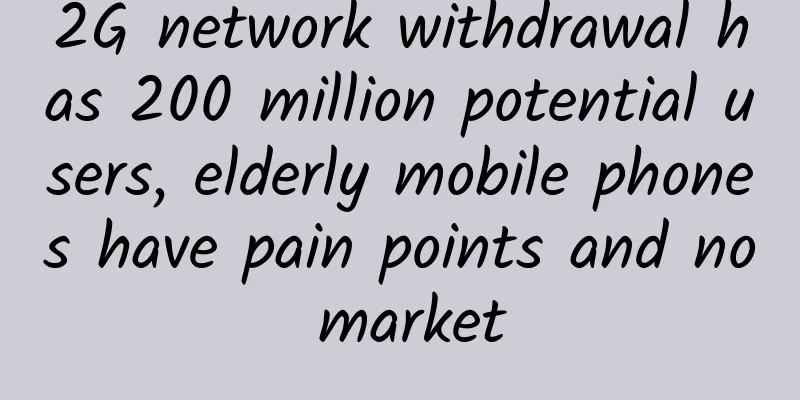5G messaging accelerates commercialization and may become the first batch of 5G applications

|
After more than two years of construction, 5G messaging is finally being put into commercial use. At the 2021 China Value-Added Telecommunications and Virtual Operator Summit - 5G Message Summit held recently, Miao Jianhua, President of the China Communications Enterprise Association, said that 5G messages are expected to become the first batch of 5G applications for public users. It is worth noting that just two months ago, China Unicom took the lead in announcing the launch of 5G message trial commercialization across the country, and provided free 5G message experience packages to corporate customers and individual users, announcing that 5G messages have officially entered the implementation stage. "5G messages are very similar to SMS and can even be regarded as another version of 'WeChat', but they have more roles and functions than the previous two." An operator official told a reporter from China Business News that this rich media messaging service based on mobile phone numbers, SIM card security authentication and real-name registration not only supports conversation services for individual users, but also supports conversation services between individuals and corporate users. According to the reporter, 5G messages currently not only support common information functions such as text, pictures, videos, emoticons, locations, searches, contacts, etc., but can also directly complete more diversified services such as search discovery, online consultation, product purchases, and online payments through the software entrance. GSMA, the Global Mobile Communications Association, predicts that the global market for rich media messaging will be greater than $150 billion in 2021, while Huachuang Securities' research report shows that in the next 5 to 7 years, the market size of 5G messaging in my country is expected to reach 300 billion yuan. As the trial commercialization of 5G messaging accelerates, telecom operators, terminal manufacturers, application developers, and industry customers are all becoming beneficiaries. Operators become the main forceIn the initial development of 5G messaging in China, operators have always been the most active promoters. As early as April 2020, the three major operators jointly released the "5G Message White Paper", which was the first to open the clarion call for the construction of the domestic 5G messaging industry. In the construction period of more than two years, operators have also been at the forefront. "Today, when operators' messaging services are becoming saturated, the implementation of 5G messaging is a new driving force for the development of the telecommunications market." Fu Guoqiang, senior engineer of the China Academy of Information and Communications Technology and deputy leader of the 5G messaging working group, believes that traditional SMS is single in form and lacks innovation. In the context of the industry's urgent need for new growth points, 5G messaging can have a positive impact on operators. Take China Unicom, which is at the forefront of trial commercialization, as an example. After launching the first trial commercialization of 5G messages in November 2021, China Unicom has now formed a 5G message product system that focuses on the public and government and enterprises. It also released the 5G Message Intelligent Information Launch Plan. Huang Changjian, deputy general manager of China Unicom Group Product Center, said that 5G messages will be included in the company's key investment areas in the future, and the planned investment amount may exceed 1 billion yuan. The other two operator giants are also not far behind. In October 2021, China Mobile and Industrial and Commercial Bank of China jointly completed the digital RMB wallet based on 5G messages and officially launched it, and created a fire emergency application based on 5G messages in some areas. In November of the same year, China Mobile's China Mobile Internet officially released the "SMS Mini Program 2.0" product. Then on the last day of the year, Shanghai Mobile announced that it would work with China Mobile Internet, China Mobile's China Mobile Terminal Company and other group subsidiaries and ZTE to complete the 5G message private network pilot at the 5G Message Innovation Center. A relevant person in charge of China Mobile told reporters that 5G message private network can be extended to various industry private networks, such as learning private network, campus private network, hotel private network, government private network, enterprise OA private network, etc., and will play a role in the aforementioned scenarios in the future. In this regard, Pacific Securities Research Report pointed out that the successful pilot of 5G message private network marks the birth of 5G message industry private network capabilities, adding special applications and powerful weapons to 5G messages, which will effectively empower thousands of industries. China Telecom also revealed the latest progress of 5G messaging on its investor interaction platform in early December 2021. It is reported that China Telecom is currently actively coordinating with the industry to jointly promote the construction of the official commercial platform of 5G messaging and the preparation for commercial business. Key friendly user testing has been launched in the early stage, and commercial services will be launched in due course when all conditions are ripe. Market research reports predict that 5G messaging will drive operators' messaging revenue growth by 56% in 2022 and overall revenue growth by 1.5%; in 2025, this growth rate will reach 148%, driving overall revenue growth by 4.1%. Against this backdrop, the pace of 5G messaging implementation and popularization will further accelerate in the next three years, becoming one of the main products of operators. The financial sector has benefited greatlyAs 5G messaging enters the commercial stage, industry application scenarios have become the focus of the industry. Minsheng Securities Research Report pointed out that since 5G messaging is similar to mini-programs and public accounts in terms of function, enterprises and individuals can fully interact with each other, ticket booking, enterprise promotion and other applications will gradually become popular, and commercial potential in the fields of finance, Internet, e-commerce, commercial chains, public utilities, etc. is expected, and the demand for platform services and industry applications such as CSP is expected to continue to increase. Among them, the financial industry has become the most concerned area among the benefit scenarios of 5G messages due to its particularity. "Due to the impact of the epidemic, financial institutions have been keen to promote contactless services in the past two years, which has made the scale of online virtual business bigger and bigger." Li Jia, a financial practitioner, told reporters that messaging services, in particular, have become the main channel for many banks to reach customers. Public data shows that the national mobile SMS business volume in the first half of 2021 was 867.55 billion, a year-on-year decrease of 2.2% compared with 2020; the mobile SMS business volume in June 2021 was 155.2 billion, an increase of 4.1% over the same period in 2020. Among them, according to the classification of key enterprises, banking enterprises ranked first, accounting for 56.7% in June 2021, more than half of the SMS sent. However, there are many problems with the traditional SMS method. In terms of communication methods, Li Jia told reporters that traditional SMS messages sent by banks are still mainly one-way receiving, and the experience of two-way interactivity is very poor, and users do not like to reply. At the same time, although banks have data on user capital flows, they have limited information on customers' investment preferences, directions, and changes in preferences, making it difficult to achieve marketing and customer service accuracy. In addition, as major banks compete in the online field, the scattered investment of online resources, insufficient scene integration capabilities, and data security challenges have gradually been exposed, which has made 5G messages enter the vision of banks and other financial companies. The latest "5G Message Research Report on the Financial Industry" released by the China Academy of Information and Communications Technology points out that 5G messages, due to the native nature of the terminals, provide financial institutions with a low-cost channel to reach customers, improve the online business experience, and bring higher customer conversion rates. Based on the 5G message platform, it provides convenient tools for financial institutions and other industry partners to jointly expand scenario finance. Xiang Lingtao, CEO of Yimei Soft, a domestic 5G message development company, previously told reporters that 5G messages can make intelligent distribution decisions based on user reading rates, click volumes, and message drop indicators. Through analysis of user conversation content and interaction data, it can optimize the interaction process in business scenarios, further improve conversion effects, and feed back into the next stage of refined operations. This also makes vertical industries very optimistic about the application prospects of 5G messages. According to incomplete statistics, as of now, more than 10 domestic mainstream banks have made substantial progress in the construction of 5G message platforms. Taking Bank of China as an example, in September 2021, it has jointly tested and launched 5G message digital RMB payment for phone bills and shopping malls with China Unicom. "From the current internal feedback, many banks have achieved good results." Li Jia said. Challenges remainAccording to the "Economic Operation of the Communications Industry from January to November 2021" released by the Ministry of Industry and Information Technology, as of the end of November 2021, the total number of mobile phone users of the three basic telecommunications companies reached 1.642 billion, of which the number of 5G mobile terminal connections of the three basic telecommunications companies reached 497 million, a net increase of 298 million from the end of last year. Such a user scale also lays the foundation for the future prospects of 5G messaging. More favorable, according to data from China Mobile's 5G messaging developer community, as of July 2021, there are 72 terminal models in China that support GSMA UP2.4, which also means that almost all mainstream 5G terminal models in China support 5G messaging. However, this does not mean that the road to 5G messaging is smooth. At the 5G messaging summit held recently, Miao Jianhua directly pointed out that the current domestic 5G messaging development is in its infancy and faces four major outstanding problems. Among them, operators have not yet reached a consensus on the operation mode of 5G messaging services, which has become one of the focuses of attention from all parties. "At present, the three major operators are still building the underlying 5G message platform according to their own plans and ideas. How to charge in the future and break down the platform barriers between them will be a big problem." Zhou Guijun, editor-in-chief of C114 Communications Network, told reporters that from experience, this phenomenon is very common within operators in the early stages of the birth of an innovative business. As commercial returns increase, it is likely that the three companies will communicate and reach a consensus. In addition, Miao Jianhua also pointed out that there are relatively few terminals that support 5G messaging services, and many terminal manufacturers lack the enthusiasm to participate in the promotion of 5G messaging; at the same time, there are relatively few 5G messaging application demonstrations, and the public perception is insufficient; in addition, the planning for the orderly and standardized development of 5G messaging needs to be further improved, and the regulatory model and technical means, especially the relevant technical means for security prevention, need to be further strengthened. In this regard, Miao Jianhua also suggested that the 5G message working group should find out the issues through research as soon as possible, solve them in a targeted manner, and promote the rapid development of 5G terminals; at the same time, further standardize the 5G message standards, promote the collaboration of 5G message services, and further carry out regulatory policy research to improve and perfect prevention technologies and means. It is worth noting that at the end of December 2021, the 5G Message Working Group of the China Academy of Information and Communications Technology announced the latest progress and planning in the field of 5G message standards. Fu Guoqiang said that in terms of standards, four group standards such as the "5G Message Service Display Specification" will continue to be promoted and released in 2022. At the same time, technical research and specification formulation will be carried out on the search, capability expansion, payment, and security hotspot functions of 5G message services. Zhou Guijun said that with the unification of standards, the existing technical problems of 5G messages will be solved soon, but commercial use still requires joint exploration by the entire industry, which will be a long process. |
>>: How can you explain the communication protocol in such a simple way?
Recommend
Ready to use right out of the box? StreamNative Platform 1.0 is now available
Recently, StreamNative solemnly announced the rel...
Let's talk about the DHCP protocol
[[375124]] 01Introduction to DHCP Protocol DHCP (...
Xiao Yaqing: Promote the deep integration of new technologies such as 5G and AI with manufacturing
[[379688]] At the online World Economic Forum hel...
The integrated development of 5G applications is imperative
In the two years since 5G was put into commercial...
5G and blockchain empower each other and accelerate the digital economy
This year, many representatives and committee mem...
5 reasons why SMBs shouldn’t upgrade to 5G yet
The excitement around 5G continues, and for good ...
Application of modular power distribution system in high-density data center
Traditional data center power distribution archit...
Where is the future of 5G terminals?
[[400174]] In the 5G era, in order to rapidly adv...
Maxthon Hosting: VPS in Hong Kong Cera Data Center starts at 40 yuan per month, and Hong Kong CN2 line starts at 60 yuan per month
Maxthon Hosting has long provided 20% discount co...
Ministry of Industry and Information Technology: Nearly 850,000 5G base stations have been built, forming the world's largest 5G independent networking network
According to the Ministry of Industry and Informa...
5G spectrum issues remain prominent: experts suggest strengthening collaborative research on high and low spectrum
December 28th morning news (Yue Ming) At the &quo...
Public transport Wi-Fi is too difficult to monetize and too costly to be shut down in more than a dozen cities
"16WiFi", owned by Beijing Yilure Hotsp...
Five common OSPF problems
I am Man Guodong, a lecturer at 51CTO Academy. On...
Protecting corporate intranet data security in just seven steps
In the Internet information age, science and tech...









